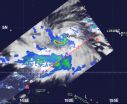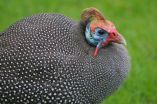(Press-News.org) One reason that biofuels are expensive to make is that the organisms used to ferment the biomass cannot make effective use of hemicellulose, the next most abundant cell wall component after cellulose. They convert only the glucose in the cellulose, thus using less than half of the available plant material.
"Here at the EBI and other places in the biofuel world, people are trying to engineer microbes that can use both," said University of Illinois microbiologist Isaac Cann. "Most of the time what they do is they take genes from different locations and try and stitch all of them together to create a pathway that will allow that microbe to use the other sugar."
Cann and Rod Mackie, also a U of I microbiologist, have been doing research at the Energy Biosciences Institute on an organism that they think could be used to solve this problem.
Mackie, a long-distance runner, found the microbe in the garbage dump of a canning plant while running in Hoopeston, Ill., in 1993. He noticed that the ground was literally bubbling with microbial activity and took samples. He and his son Kevin, who was in high school at the time, isolated microbes from the samples.
Among these was a bacterium that was later named Caldanaerobius polysaccharolyticus. "We found many exciting enzymes from this organism," said Cann, who joined the project when he came to Mackie's lab as a postdoctoral researcher.
Specifically, the bacterium contains all of the proteins and enzymes needed to break down xylan, which is the most common hemicellulose, and then to transport the fragments into the cell and metabolize them. All of the genes are located in a single cluster on the microbe's genome.
"So instead of taking a piece from here and from there and stitching them together, we can just take this part of the gene," Cann explained. "You can cut this and put it into another microbe."
On the surface of the cell, there is an enzyme that cuts the xylan into small pieces and a protein that binds to the pieces and brings them inside the cell. Enzymes within the cell metabolize the sugar.
The reason that this microbe, unlike most others used to make biofuels, is able to degrade xylan is that it has evolved an enzyme that allows it to remove the side chains, or decorations, that are part of xylan's structure. They hinder the degradation process by preventing complete accessibility of the enzymes to the sugar chain.
Once the side chains have been removed, another enzyme in the microbe breaks the sugar chain down into single sugars, or xylose. Other enzymes within the cell then metabolize the xylose.
Having the enzymes next to each other on the genome is convenient for scientists who are working on engineering microbes that can degrade both cellulose and hemicellulose. The cluster could be designed as a cassette and put into a microbe that normally degrades only cellulose.
Moreover, being next to each other allows them to work efficiently. "You have a set of enzymes that have co-evolved," Cann explained. "If they have co-evolved over millions of years, it means they have been fine-tuned to work together."
Another advantage of Caldanaerobius polysaccharolyticus is that it is a thermophilic bacterium, and its enzymes are resistant to temperatures as high as 70 degrees Celsius. Biofuel fermentation is usually done at 37 degrees Celsius, a temperature at which most microbes can survive. This means that the material in the fermentation vats is easily contaminated.
The next step for Cann and his collaborators is to develop techniques for transferring this gene cluster, which is quite large, into microbes.
INFORMATION:
The research was recently published in the Journal of Biological Chemistry and is available at http://www.jbc.org/content/287/42/34946.full?sid=3f2242e5-c278-4d3e-b16c-1c6f79b01f4b. Yejun Han, Vinayak Agarwal, Dylan Dodd, Jason Kim, Brian Bae, and Satish K. Nair are co-authors.
The Energy Biosciences Institute is a four-partner research collaboration that includes the University of Illinois, the University of California at Berkeley, Lawrence Berkeley National Laboratory, and BP, the energy company that funds the work. It is dedicated to applying the biological sciences to the challenges of producing sustainable, renewable energy for the world.
END
ABOUT BAYLOR SCHOOL OF EDUCATION
The Baylor School of Education is accredited by the National Council for Accreditation of Teacher Education and consists of four departments: Curriculum and Instruction (preparation for classroom teachers and specialists); Educational Administration (post-graduate preparation for school leadership); Educational Psychology (undergraduate and graduate programs for those who are interested in learning, development, measurement, and exceptionalities); and Health, Human Performance and Recreation (preparing for sport- and health-related careers, ...
(Phoenix, AZ Nov. 27, 2012) – Lung cancer researchers at St. Joseph's Hospital and Medical Center in Phoenix, Ariz., in collaboration with researchers at the Translational Genomics Research Institute and other institutions, have identified a gene that plays a role in the growth and spread of non-small cell lung cancer tumors, opening the door for potential new treatment options.
The study, titled "Elevated Expression of Fn14 in Non-Small Cell Lung Cancer Correlates with Activated EGFR and Promotes Tumor Cell Migration and Invasion," was published in the May 2012 issue ...
VIDEO:
MESSENGER's Mercury Laser Altimeter sends out laser pulses that hit the ground and return to the instrument. The amount of light that returns for each pulse gives the reflectance at...
Click here for more information.
A Goddard-built instrument on NASA's MESSENGER mission provided one of three new lines of evidence that water ice exists near the north pole of Mercury. Most of the ice is covered by a thin layer of material that blankets and protects the ice, but in ...
VIDEO:
On Nov. 27, 2012, NASA's TRMM satellite revealed that rain in Tropical Storm Bopha was falling at a rate of over 70mm/hour (about 1.75 inches) in the red areas. TRMM...
Click here for more information.
NASA's TRMM and Aqua satellites captured images of Tropical Storm Bopha as it continues to move through Micronesia in the western North Pacific Ocean and trigger warnings and watches throughout.
From its orbit in space, NASA's Tropical Rainfall Measuring Mission ...
PHILADELPHIA—Treating Parkinson's disease patients with the experimental drug GM1 ganglioside improved symptoms and slowed their progression during a two and a half-year trial, Thomas Jefferson University researchers report in a new study published online November 28 in the Journal of the Neurological Sciences.
Although the precise mechanisms of action of this drug are still unclear, the drug may protect patients' dopamine-producing neurons from dying and at least partially restore their function, thereby increasing levels of dopamine, the key neurochemical missing in ...
SAN FRANCISCO, CA—November 27, 2012—Scientists at the Gladstone Institutes have defined for the first time a key underlying process implicated in multiple sclerosis (MS)—a disease that causes progressive and irreversible damage to nerve cells in the brain and spinal cord. This discovery offers new hope for the millions who suffer from this debilitating disease for which there is no cure.
Researchers in the laboratory of Gladstone Investigator Katerina Akassoglou, PhD, have identified in animal models precisely how a protein that seeps from the blood into the brain sets ...
VIDEO:
Spectacular jets powered by the gravitational energy of a supermassive black hole in the core of the elliptical galaxy Hercules A illustrate the combined imaging power of two of astronomy's...
Click here for more information.
Spectacular jets powered by the gravitational energy of a super massive black hole in the core of the elliptical galaxy Hercules A illustrate the combined imaging power of two of astronomy's cutting-edge tools, the Hubble Space Telescope's ...
(PHILADELPHIA) – Cancer and stress go hand-in-hand, and high stress levels can lead to poorer health outcomes in cancer patients. The Jefferson-Myrna Brind Center of Integrative Medicine combined creative art therapy with a Mindfulness-based Stress Reduction (MBSR) program for women with breast cancer and showed changes in brain activity associated with lower stress and anxiety after the eight-week program. Their new study appears in the December issue of the journal Stress and Health.
Daniel Monti, MD, director of the Jefferson-Myrna Brind Center of Integrative Medicine ...
SALT LAKE CITY, Nov. 30, 2012 – Turkey raises and releases thousands of non-native guineafowl to eat ticks that carry the deadly Crimean-Congo hemorrhagic fever virus. Yet research suggests guineafowl eat few ticks, but carry the parasites on their feathers, possibly spreading the disease they were meant to stop, says a Turkish biologist working at the University of Utah.
"They are introducing a species that is not eating many ticks, based on studies of stomach content, and is carrying the ticks, which are the best conduit for spreading Crimean-Congo hemorrhagic fever," ...
Cincinnati, OH, November 30, 2012 -- Rates of childhood obesity have tripled in the past 30 years, and food marketing has been implicated as one factor contributing to this trend. Every year, companies spend more than $10 billion in the US marketing their food and beverages to children; 98% of the food products advertised to children on television are high in fat, sugar, or sodium. In a new study scheduled for publication in The Journal of Pediatrics, researchers used neuroimaging to study the effects of food logos on obese and healthy weight children.
Amanda S. Bruce, ...






